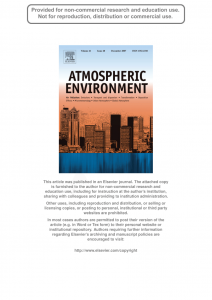Researchers Build Flexible, Smart Window That Can Ensnare Air Pollutants
ZMR NEWS
- 0
Flexible smart windows have been developed by the researchers that can ensnare air pollutants and maintain the indoor atmosphere free of destructive particulate matter. Adjusting the intensity of light and decreasing the atmospheric particulate matter’s concentration in commercial structures are both vital to keep indoor public healthy and comfortable. Smart windows constructed on the transparent and flexible silver (Ag)-nylon electrodes can adjust the light intensity penetrating commercial structures to retain thermal comfort.

Nevertheless, developing a large-scale see-through smart window for elevated effectiveness PM2.5 capture has been a major challenge, so far, said the scientists. Researchers directed by YU Shuhong of USTC (the University of Science and Technology of China) built an easy solution-based method to construct large-area transparent, flexible windows that can competently ensnare PM2.5. the scientists said, “It takes merely around 20 Min and USD 15.03 to construct 7.5 sq m Ag-nylon transparent, flexible windows.”
The achieved mesh, covered with thermochromic dye, functions not only to adjust the intensity of light but also to sanitize indoor air. The smart window’s performance remained steady even after 1,000 cycles of stretching deformation and 10,000 cycles of bending test, as said by the research team. The accomplishment of the present design approach offers more alternatives in building next-gen air pollution filters and flexible transparent smart windows, as said by scientists.
On a similar note, scientists at IIT, Mandi, have utilized soot released by diesel engines to swab oil as well as other organic contaminants from water. The research team included this soot into the polymer sponges that demonstrated a high capacity to soak up a number of oils, the finest outcomes being with engine oil. Furthermore, the research team of IIT also observed that the sponges can be recycled as well as retained efficiency of up to 95% even after 10 cycles.
